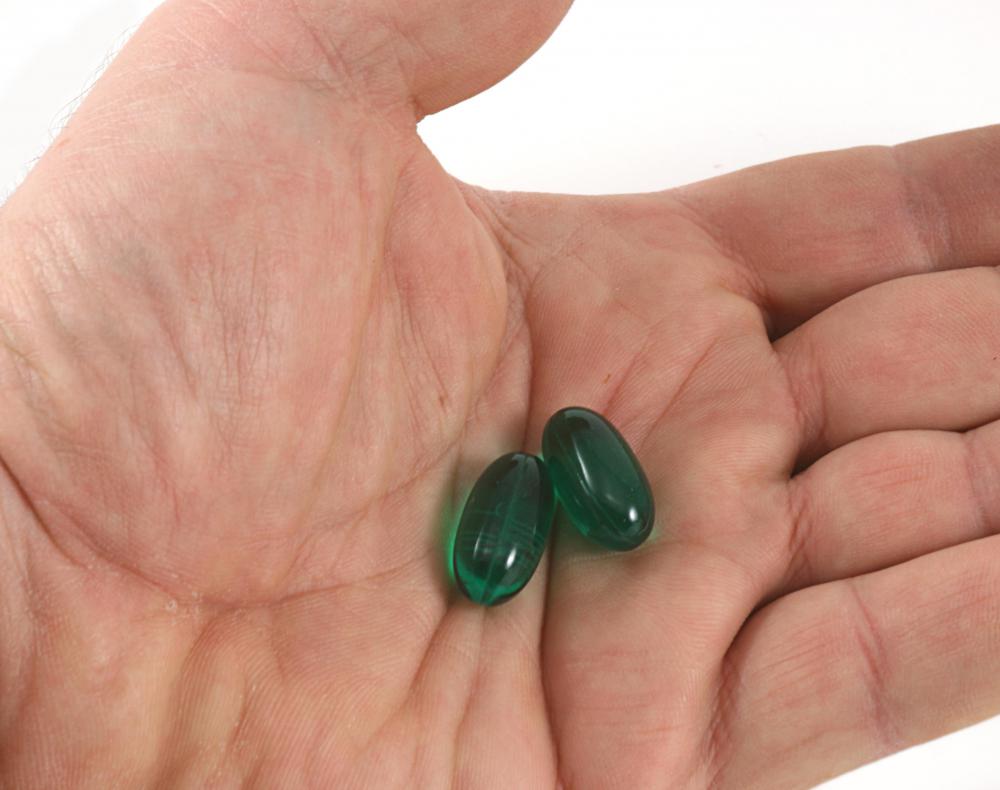At WiseGEEK, we're committed to delivering accurate, trustworthy information. Our expert-authored content is rigorously fact-checked and sourced from credible authorities. Discover how we uphold the highest standards in providing you with reliable knowledge.
What Is Japanese Chlorella?
Japanese chlorella is a form of freshwater green algae often referred to as Yaeyama chlorella, named after the company that forms it into dried powder or tablets as a food and health supplement on the small island of Ishigaki off the southwest coast of Japan. Several different species of the algae exist, though they are all single-celled organisms which, as of 2011, contain the highest known concentrations of chlorophyll-a and chlorophyll-b of any plant species at around 3% to 5% by volume. Though the organism goes by many names such as Bulgarian Green Algae, Freshwater Seaweed, and Algue Verte d'Eau Douce, processed forms of all of them are considered to be useful in preventing cancer and lowering cholesterol levels, as well as healing wounds and being generally beneficial for many digestive and other health conditions.
Officially, Japanese chlorella is a form of micro-algae since it is a single-celled organism where each cell can be as small as 2,000 nanometers in diameter. It is so high in a variety of vitamins, minerals, and nutrients such as protein, fats, and carbohydrates that it has been considered to be a super food that could alleviate world food shortages, but cultivating it can be an energy intensive process. The benefits of chlorella in the human diet are only manifest as well after extensive processing, as it was discovered in the 1960s that it is indigestible for human beings and animals in its natural form due to the fact that the cell wall of the plant cannot be broken down by mammalian digestive systems.

On the island of Ishigaki, Japanese chlorella is fermented or germinated in indoor laboratories, then transferred to outdoor cultivation pools to grow, after which it is later harvested and sterilized. In a blanching and high-intensity drying process, the cell walls are broken down so that it can be digested by people. It is then ground into a powder and tablets for sale, while undergoing careful monitoring for the content of heavy metals.

Since algae have a tendency to absorb heavy metals during their life cycle, it is important to minimize this as much as possible when it is used as a food source. Japanese chlorella has a global reputation for being the purest form of the algae, with levels of arsenic, cadmium, and mercury allowed at no more than 20 parts per million in the end product. These levels are monitored by the Japanese government itself for safety reasons, as types of algae like Japanese chlorella can have other side effects as well. These include diarrhea and nausea, as well as allergic reactions and abnormal skin sensitivity when exposed to the sun after taking chlorella supplements. Women who are pregnant and anyone with a compromised immune system are cautioned to not consume even organic chlorella, and taking Japanese chlorella can also have unpredictable effects on anyone who is using prescribed medication.
AS FEATURED ON:
AS FEATURED ON:













Discuss this Article
Post your comments